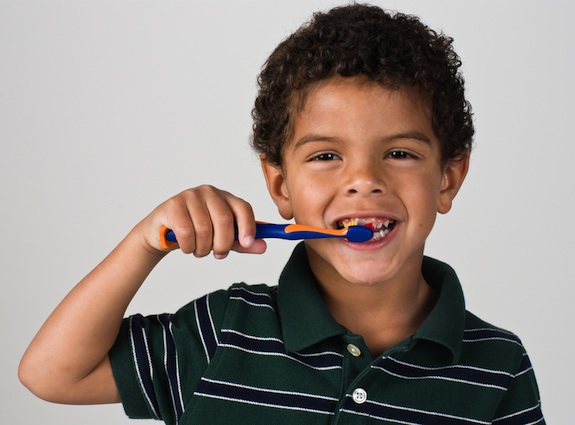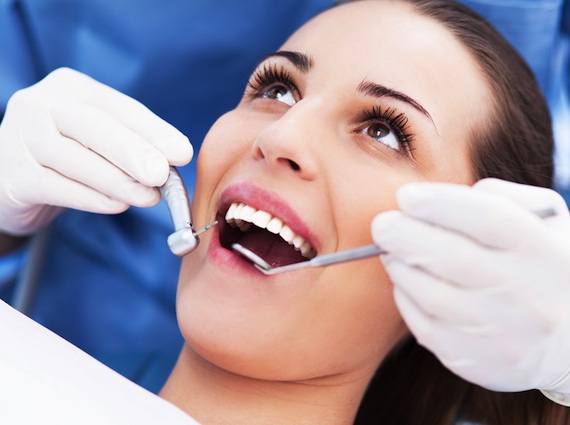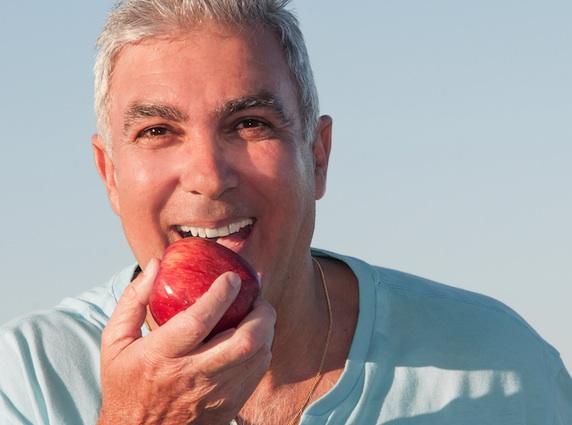Just 60 years ago, it was an assumption that as we age we would lose our natural teeth. But, that’s not the case for today’s older adults who are keeping their natural teeth longer than ever before. A healthy mouth and teeth help you look good, eat delicious and nutritious foods, and speak clearly and confidently. Being mouth healthy is essential for good quality of life. Your mouth is the gateway to your body. Maintaining good oral health habits now is especially important because unhealthy bacteria in the mouth not only can harm your teeth and gums but may be associated with serious medical conditions. Research has shown that infections in the mouth may be associated with heart disease, stroke, diabetes, pneumonia and other health problems that are common in older adults. It really only takes a few simple steps, brushing and flossing daily, visiting your dentist regularly and eating nutritious foods to be mouth healthy for life.
Archive for August 2015

Getting Kids to Brush
Start with a visit to your dentist. Here, a dental professional will teach your child the proper way to brush, using kid-friendly words. Let your child pick out her own toothbrush and toothpaste. There are many colorful child-sized toothbrushes on the market, as well as toothpastes in flavors that appeal to kids. Just make sure that the toothbrush has soft or very soft, rounded bristles so they don’t damage your child’s gums or tooth enamel. Be sure your child uses only a pea-sized amount of toothpaste on her brush. Kids tend to swallow toothpaste, and it’s important that they not get too much fluoride. If your child doesn’t like toothpaste, don’t sweat it! You don’t want dental hygiene sessions to turn into a battle. Brush your pet’s teeth, and let your child help – or at least watch. Not only does this reinforce the idea that clean teeth are important, it’s also good for your pet. Praise their brushing efforts and the results they’re producing. And finally, because children learn by example, be sure your child sees you brushing and flossing your own teeth every single day. It’s good for them, and good for you!

Understanding Tooth Decay
Tooth decay is a destruction of the tooth enamel. It occurs when foods containing carbohydrates (sugars and starches) such as milk, pop, raisins, cakes or candy are frequently left on the teeth. Bacteria that live in the mouth thrive on these foods, producing acids as a result. Over a period of time, these acids destroy tooth enamel, resulting in tooth decay.
You can help prevent tooth decay by following these tips:
Brush twice a day with a fluoride toothpaste.
Clean between your teeth daily with floss or interdental cleaner.
Eat nutritious and balanced meals and limit snacking.
Check with your dentist about use of supplemental fluoride, which strengthens your teeth, and about use of dental sealants (a plastic protective coating) applied to the chewing surfaces of the back teeth to protect them from decay.
Visit your dentist regularly for professional cleanings and oral examination.
Changes that occur with aging make cavities an problem. Recession of the gums away from the teeth, combined with an increased incidence of gum disease, can expose tooth roots to plaque. Tooth roots are covered with cementum, a softer tissue than enamel. They are susceptible to decay and are more sensitive to touch and to hot and cold. The majority of people over age 50 have tooth-root decay.
Decay around the edges, or margins, of fillings is also common to older adults. Because many older adults lacked benefits of fluoride and modern preventive dental care when they were growing up, they often have a number of dental fillings. Over the years, these fillings may weaken and tend to fracture and leak around the edges. Bacteria accumulate in these tiny crevices causing acid to build up which leads to decay.

